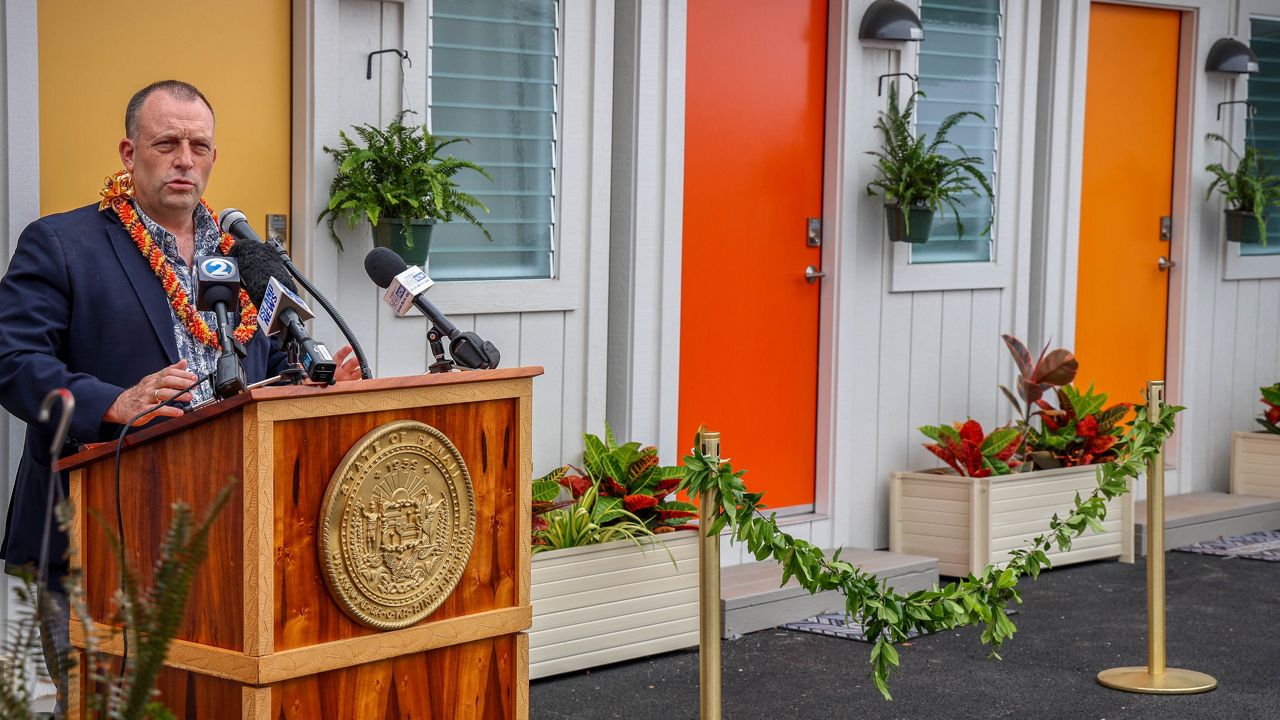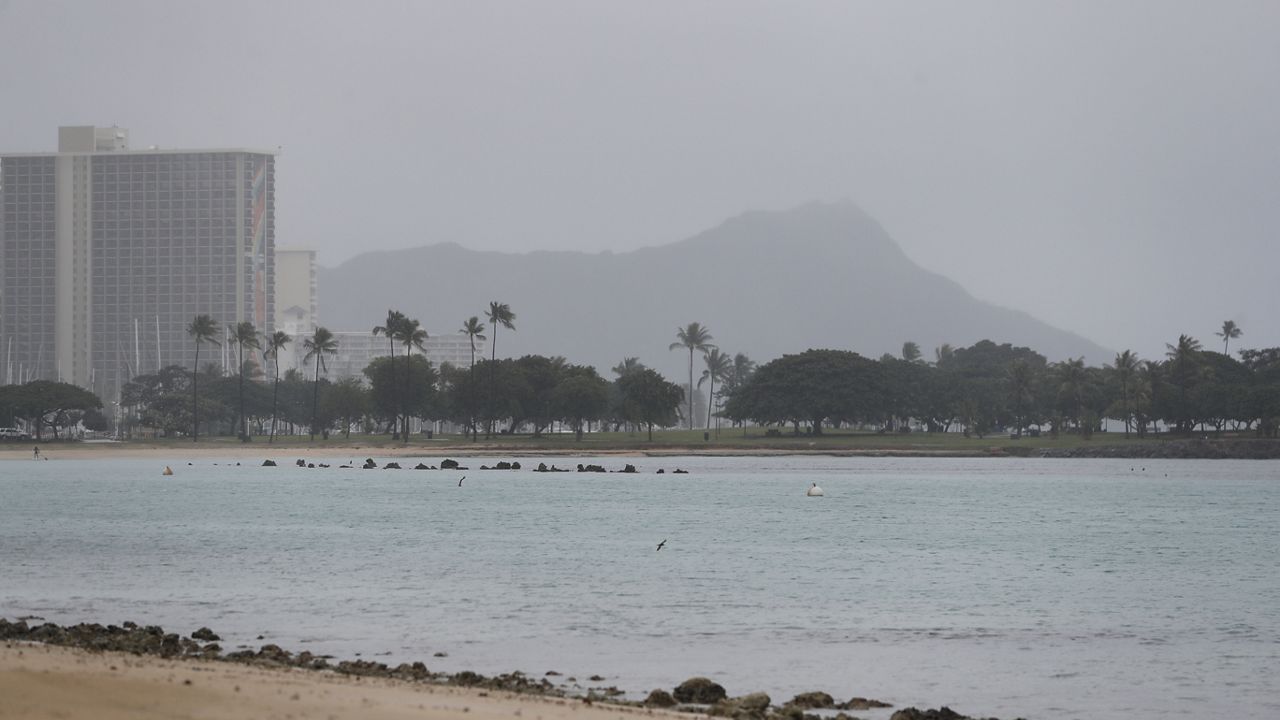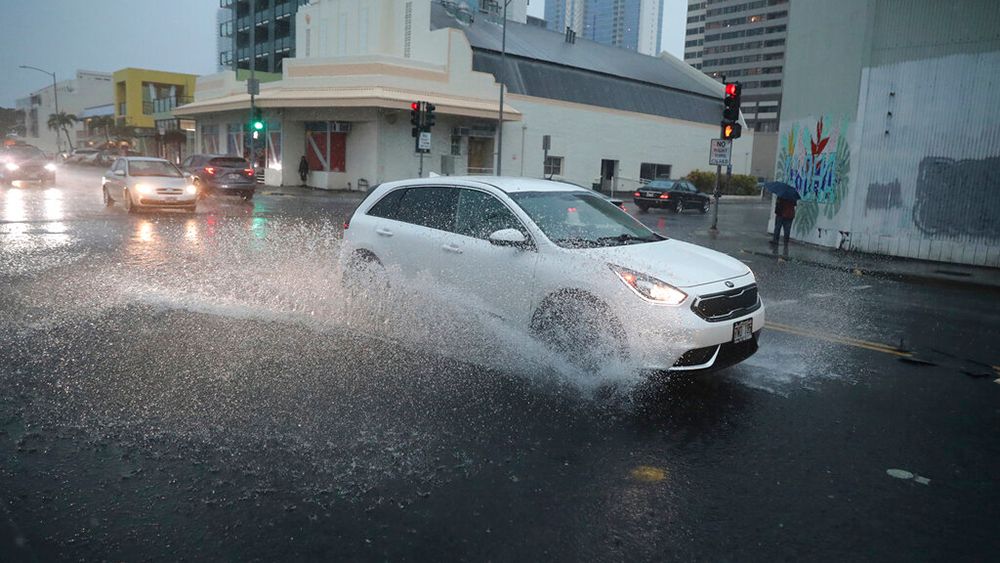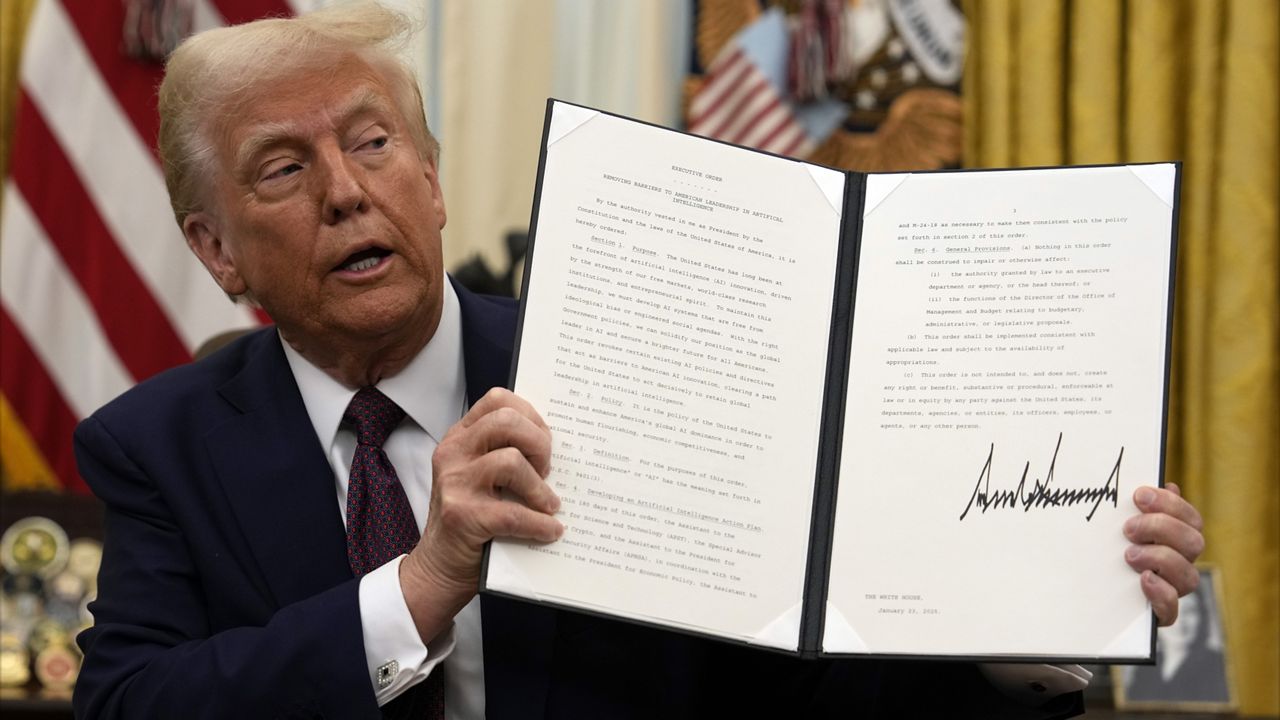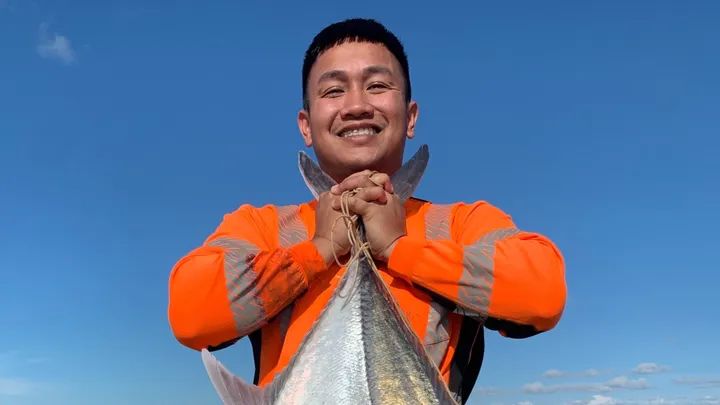Fifty people in need of not just shelter but clinical support, care coordination and a sense of community will now have a place to call home with the official opening of Hookahi Leo, the state’s third kauhale village, in Kalihi.
“When our unhoused neighbors have a roof over their heads, without time limits or other conditions that force them back to the streets, they are healthier and so are our communities,” said Gov. Josh Green at a blessing for the new facility on Thursday. “Like the other two kauhale we have established in our term, this kauhale is an intentional community. It will serve as a healing home for many people, creating a village for people to support one another and make them feel like they are home.”
Green was joined by representatives from partner agencies HomeAid Hawaii and the Hawaii Health and Harm Reduction Center.
Green has made kauhale-style villages a key component of his administration’s larger strategy for addressing the state’s homelessness problem and reducing unsheltered homelessness by half during his first term.
The new kauhale’s name means “a community with one voice” and was selected by its prospective new residents.
The facility’s final cost was $1.2 million, nearly 30% less than originally projected thanks to partnerships with the building industry, including contractors who brought in pro-bono labor and donated materials and supplies, according to HomeAid executive director Kimo Carvalho.
John Mizuno, the newly appointed head of the Statewide Office on Homelessness and Housing Solutions, said Hookahi Leo will help meet the needs of unsheltered individuals who need the stability that long-term housing affords.
“Hookahi Leo will address the significant lack of deeply affordable community spaces that until now, has meant that homeless individuals were often cycled in and out of temporary shelters, waiting for housing they can afford,” Mizuno said. “This project and the Governor’s broader Kauhale Initiative will fill this gap, providing both deep affordability and a sense of community.”
Operated by the Hawaii Health and Harm Reduction Center, the new kauhale is equipped with restroom facilities, shower trailers, a laundry facility and office space for care coordination and provides 24-7 security, 24-7 intake/management staff and peer support.
According to the governor’s office, Hookahi Leo will address the needs of people who are or could become homeless and who would benefit from a “welcoming, safe, stable, supportive, trauma-informed place to continue recovery.”
At Thursday’s ceremony, Laura Mae Duclayan, who had lived unhoused for many years at Sand Island Beach Park, spoke to the impact the new kauhale will have on those who have experienced chronic homelessness.
“Many of us have waited years for a place to call home,” she said. “Not a temporary shelter or transitional place, but somewhere that gives us stability and the opportunity to rebuild a sense of community. Many of us are ready for this move and to take kuleana for building a village together.”
HHRC executive director Heather Lusk said her organization has been working with unsheltered individuals in the area in preparation for moving into the new complex.
“It’s been exciting to engage people experiencing houselessness in the planning process for the kauhale,” she said. “It’s an opportunity to build a sense of belonging, ownership, and responsibility among residents that will be key to the kauhale’s success.”
HHRC will provide support services including interpersonal engagement, community-building activities, cultural support and wellness programming, as well as clinical support services like telehealth, linkage with medical and behavioral health care, wound care, and care coordination.
The site is wheelchair accessible, but eligible individuals need to be able to perform daily activities like showering and using the bathroom with minimal assistance.
Hookahi Leo was built by the state’s nonprofit development partner HomeAid Hawaii, which also built the state’s two other existing kauhale, Ka Malu Koolau in Kaneohe and the Pulama Ola medical respite.
“With critical infrastructure challenges that have delayed construction for nearly four years, we are grateful our policy tools have allowed us the opportunity to quickly build a housing solution for a homeless community that has been promised these homes,” said Carvalho.
Michael Tsai covers local and state politics for Spectrum News Hawaii. He can be reached at michael.tsai@charter.com.



